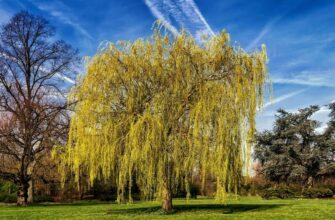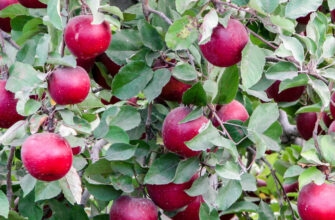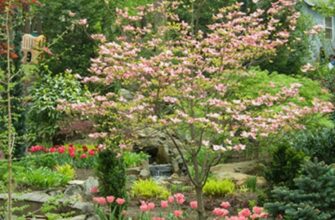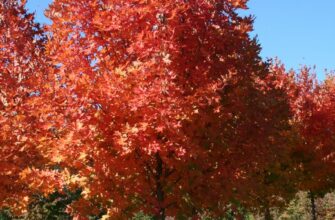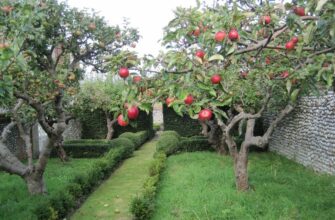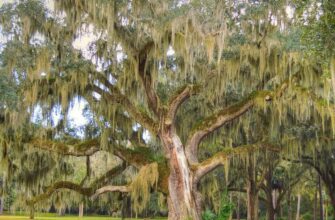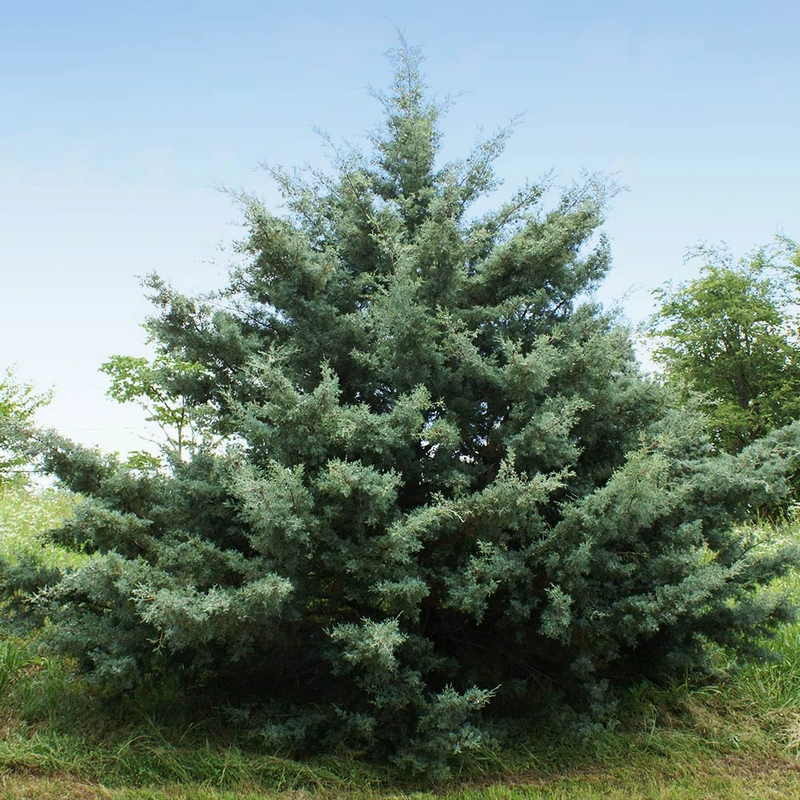
- Discover 4 Resilient Trees that Thrive in Dry Conditions
- Oak Trees with Drought Resistance
- Pine Trees that Thrive in Dry Climates
- Juniper Trees for Arid Landscapes
- Cypress Trees that Endure Drought
- Hardy Trees for Water-Scarce Environments
- Drought-Tolerant Trees for Harsh Conditions
- Resilient Trees that Withstand Drought
- Durable Trees for Dry and Hot Climates
- Tough Trees that Survive Drought
- Low-Maintenance Trees for Dry Regions
- Robust Trees that Adapt to Water Scarcity
- Long-Living Trees for Dry Landscapes
- Sturdy Trees that Endure Dry Spells
- Reliable Trees for Arid Climates
- Water-Wise Trees for Drought-Prone Areas
- FAQ:
- What are some drought-tolerant trees that can withstand harsh conditions?
- Are there any trees that can survive in dry climates?
- What are some characteristics of drought-tolerant trees?
- Are there any trees that can survive i
Discover 4 Resilient Trees that Thrive in Dry Conditions
When it comes to landscaping in arid regions, finding trees that can withstand drought conditions is essential. Luckily, there are several rugged tree species that are known for their ability to thrive in dry climates. These trees have adapted to survive with minimal water, making them an excellent choice for gardens and landscapes in areas with limited rainfall.
One such tree is the Mesquite tree. Native to arid regions of North and South America, the Mesquite tree is well-suited for drought conditions. Its deep root system allows it to access water deep in the ground, making it highly resistant to drought. Additionally, the tree’s leaves are small and waxy, reducing water loss through transpiration.
Another drought-tolerant tree is the Olive tree. Originating from the Mediterranean region, the Olive tree is known for its ability to withstand dry and hot climates. Its silver-green leaves are adapted to reduce water loss, and its deep root system allows it to access water from deep within the soil. The Olive tree is not only drought-tolerant but also highly resilient to harsh conditions.
The Juniper tree is also a great choice for arid landscapes. Junipers are known for their ability to survive in extreme climates, including deserts and high-altitude areas. These trees have needle-like leaves that help reduce water loss, and their dense branches provide shade, reducing evaporation from the soil. Junipers are highly adaptable and can thrive in a variety of soil types.
Lastly, the Acacia tree is a popular choice for drought-tolerant landscapes. Native to Australia and Africa, Acacias have long been known for their ability to survive in arid environments. These trees have small, feathery leaves that reduce water loss, and their deep root systems allow them to access water from deep within the ground. Acacias are not only drought-tolerant but also provide shade and shelter for wildlife.
In conclusion, when choosing trees for drought-prone regions, it is important to consider their ability to withstand dry conditions. The Mesquite, Olive, Juniper, and Acacia trees are all excellent choices for landscapes that require rugged, drought-tolerant trees. These trees have adapted to survive with minimal water and can thrive in arid environments, making them perfect for gardens and landscapes in regions with limited rainfall.
Oak Trees with Drought Resistance
Oak trees are known for their rugged and majestic appearance, but they also possess a remarkable ability to withstand drought conditions. These trees have adapted to survive in arid climates, making them an excellent choice for landscaping in regions with limited water resources.
One type of oak tree that is particularly drought-tolerant is the Quercus agrifolia, commonly known as the coast live oak. This tree is native to the coastal regions of California and can tolerate long periods of drought without sacrificing its beauty or health. Its deep root system allows it to access water from deep within the soil, ensuring its survival even during dry spells.
Another oak tree with impressive drought resistance is the Quercus ilex, also known as the holm oak or holly oak. Native to the Mediterranean region, this tree is well-suited for dry and hot climates. Its thick, leathery leaves help reduce water loss through evaporation, while its extensive root system allows it to extract moisture from deep within the ground.
The Quercus robur, or English oak, is another species that can withstand drought conditions. This oak tree is native to Europe and is known for its iconic appearance and longevity. Its ability to survive in dry conditions is due to its deep root system, which helps it access water even during periods of limited rainfall.
Lastly, the Quercus virginiana, commonly known as the southern live oak, is a drought-tolerant tree native to the southeastern United States. This tree is well-adapted to the hot and humid climate of the region, with its thick, waxy leaves reducing water loss through transpiration. Its strong and sturdy branches make it a popular choice for landscaping in coastal areas.
In conclusion, oak trees are not only rugged and beautiful, but they also possess impressive drought resistance. Their ability to survive in arid conditions makes them a valuable addition to any landscape, especially in regions with limited water resources.
Pine Trees that Thrive in Dry Climates
When it comes to rugged trees that can withstand dry climates, pine trees are among the top contenders. These resilient trees have adapted to thrive in arid regions, making them a popular choice for landscaping in areas with limited water resources.
One of the key features of pine trees is their ability to conserve water. Their long, needle-like leaves have a waxy coating that helps reduce water loss through evaporation. This adaptation allows pine trees to survive in dry climates where other trees may struggle.
There are several varieties of pine trees that are particularly well-suited for dry climates. One example is the Aleppo pine (Pinus halepensis), which is native to the Mediterranean region. This tree is known for its ability to withstand drought and high temperatures, making it a perfect choice for landscaping in arid areas.
Another pine tree that thrives in dry climates is the Pinyon pine (Pinus edulis). This tree is native to the southwestern United States and is well-adapted to arid conditions. It has a deep root system that allows it to access water from deep within the soil, making it highly drought-tolerant.
The Jeffrey pine (Pinus jeffreyi) is another rugged tree that can thrive in dry climates. Native to the western United States, this tree has long, sturdy needles and a deep taproot that helps it withstand drought. It is also resistant to pests and diseases, making it a low-maintenance choice for dry landscapes.
Lastly, the Scots pine (Pinus sylvestris) is a versatile tree that can tolerate a wide range of growing conditions, including dry climates. This pine tree has a dense canopy that provides shade and helps reduce water evaporation from the soil. It is commonly used in reforestation efforts in arid regions.
In conclusion, pine trees are a great choice for landscaping in dry climates due to their rugged nature and ability to withstand drought. Whether it’s the Aleppo pine, Pinyon pine, Jeffrey pine, or Scots pine, these trees have adapted to thrive in arid regions and can add beauty and resilience to any landscape.
Juniper Trees for Arid Landscapes
Juniper trees are a great choice for arid landscapes due to their rugged nature and drought-tolerant characteristics. These trees are known for their ability to withstand harsh conditions and thrive in dry climates.
There are several varieties of juniper trees that are suitable for arid landscapes. One popular choice is the Rocky Mountain juniper (Juniperus scopulorum), which is native to the western United States. This tree has a unique and attractive appearance, with its blue-green foliage and twisted branches.
Another drought-tolerant juniper tree is the Eastern red cedar (Juniperus virginiana). This tree is native to eastern North America and is known for its ability to adapt to various soil types and climates. It has a dense and compact growth habit, making it a great choice for privacy screens or windbreaks.
The California juniper (Juniperus californica) is another rugged and drought-tolerant tree that is well-suited for arid landscapes. This tree is native to California and can be found in the desert regions of the state. It has an open and spreading growth habit, with silvery-blue foliage that adds a unique touch to any landscape.
Lastly, the Utah juniper (Juniperus osteosperma) is a hardy and drought-tolerant tree that is native to the western United States. It is known for its ability to withstand extreme temperatures and dry conditions. This tree has a columnar growth habit and silver-blue foliage, making it a beautiful addition to any arid landscape.
In conclusion, juniper trees are a great choice for arid landscapes due to their rugged nature and ability to tolerate drought. With their unique and attractive appearances, these trees can add beauty and interest to any dry climate garden or landscape.
Cypress Trees that Endure Drought
The cypress trees are known for their ability to withstand harsh conditions, making them a popular choice for landscapes that experience drought. These trees have adapted to survive in dry climates by developing deep root systems that can reach water sources deep underground. This allows them to thrive even when rainfall is scarce.
One of the most drought-tolerant cypress trees is the Leyland cypress. This tree is native to the southeastern United States and has become a favorite among landscapers due to its ability to withstand both drought and extreme temperatures. It is a fast-growing tree that can reach heights of up to 60 feet, making it an excellent choice for providing shade and privacy in dry climates.
Another rugged cypress tree is the Arizona cypress. This tree is native to the southwestern United States and is highly adaptable to arid conditions. It has a unique silver-blue foliage that adds a touch of color to any landscape. The Arizona cypress is also known for its strong wood, making it resistant to wind and other harsh weather conditions.
The Monterey cypress is another drought-tolerant tree that is commonly found along the coast of California. This tree has a distinctive twisted trunk and dense foliage that provides excellent windbreak and privacy. It is also highly resistant to salt spray, making it a popular choice for coastal landscapes.
Lastly, the bald cypress is a rugged tree that can withstand both drought and flooding. It is native to the southeastern United States and is often found in swampy areas. The bald cypress has a unique feature of developing “knees” – woody projections that rise from the ground around the tree’s base. These knees help the tree to get oxygen in waterlogged soil and provide stability during floods.
In conclusion, cypress trees are a great choice for landscapes that experience drought. Their ability to adapt to harsh conditions and their rugged nature make them an excellent addition to any dry climate garden.
Hardy Trees for Water-Scarce Environments
In water-scarce environments, finding trees that can withstand drought conditions is essential. These trees have adapted to survive in arid climates, making them ideal for landscaping projects in regions with limited water resources. Here are four drought-tolerant trees that are hardy enough to thrive in water-scarce environments:
- Mesquite Tree: The mesquite tree is known for its ability to survive in extremely dry conditions. With its deep root system, it can access water from deep within the ground, making it a reliable choice for water-scarce environments.
- Ironwood Tree: The ironwood tree is well-suited for water-scarce environments due to its ability to store water in its trunk and branches. This tree can withstand long periods without rainfall, making it a resilient choice for landscaping projects in arid regions.
- Olive Tree: The olive tree is not only drought-tolerant but also highly adaptable to various soil types. Its deep root system allows it to access water from deeper soil layers, making it a suitable choice for water-scarce environments.
- Acacia Tree: Acacia trees have evolved to survive in water-scarce environments by developing long taproots that can reach deep groundwater sources. These trees are known for their resilience and can thrive in arid regions with minimal water.
When selecting trees for water-scarce environments, it is important to consider their adaptability, deep root systems, and ability to withstand prolonged periods without rainfall. These four trees are just a few examples of the many options available for landscaping projects in arid regions. By choosing drought-tolerant trees, you can create beautiful and sustainable landscapes even in water-scarce environments.
Drought-Tolerant Trees for Harsh Conditions
When it comes to landscaping in areas with harsh conditions, such as drought-prone regions, it is important to choose trees that are able to withstand these challenging environments. Drought-tolerant trees are specially adapted to survive with minimal water, making them an excellent choice for arid climates.
Here are 4 rugged trees that are known for their ability to thrive in drought conditions:
- Desert Willow (Chilopsis linearis): This tree is native to desert areas and has long, narrow leaves that help reduce water loss. It produces beautiful, trumpet-shaped flowers in shades of pink, purple, or white, attracting butterflies and hummingbirds.
- Mesquite (Prosopis spp.): Mesquite trees are highly adaptable and can survive in a variety of harsh conditions, including extreme heat and drought. They have deep root systems that allow them to access water from deep within the ground.
- Olive (Olea europaea): Olive trees are known for their ability to withstand drought and poor soil conditions. They have small, silver-gray leaves that help reduce water loss through evaporation. In addition to being drought-tolerant, olive trees also produce delicious fruits.
- Juniper (Juniperus spp.): Juniper trees are well-suited for dry climates and can thrive in rocky, sandy soils. They have needle-like leaves that help conserve water and produce berries that are an important food source for wildlife.
These drought-tolerant trees not only provide beauty and shade, but they also play a crucial role in conserving water and maintaining the ecological balance in arid regions. By choosing these trees for your landscaping projects, you can create a sustainable and resilient environment even in the face of harsh conditions.
Resilient Trees that Withstand Drought
When it comes to choosing trees for landscapes that are rugged and able to withstand drought conditions, there are several options available. These trees have adapted to survive in dry and arid environments and can thrive with minimal water requirements.
One such tree is the Mesquite tree. This tree is known for its ability to withstand harsh conditions, including drought. It has deep roots that can reach groundwater, allowing it to survive in dry soils. The Mesquite tree also has small, waxy leaves that help reduce water loss through transpiration.
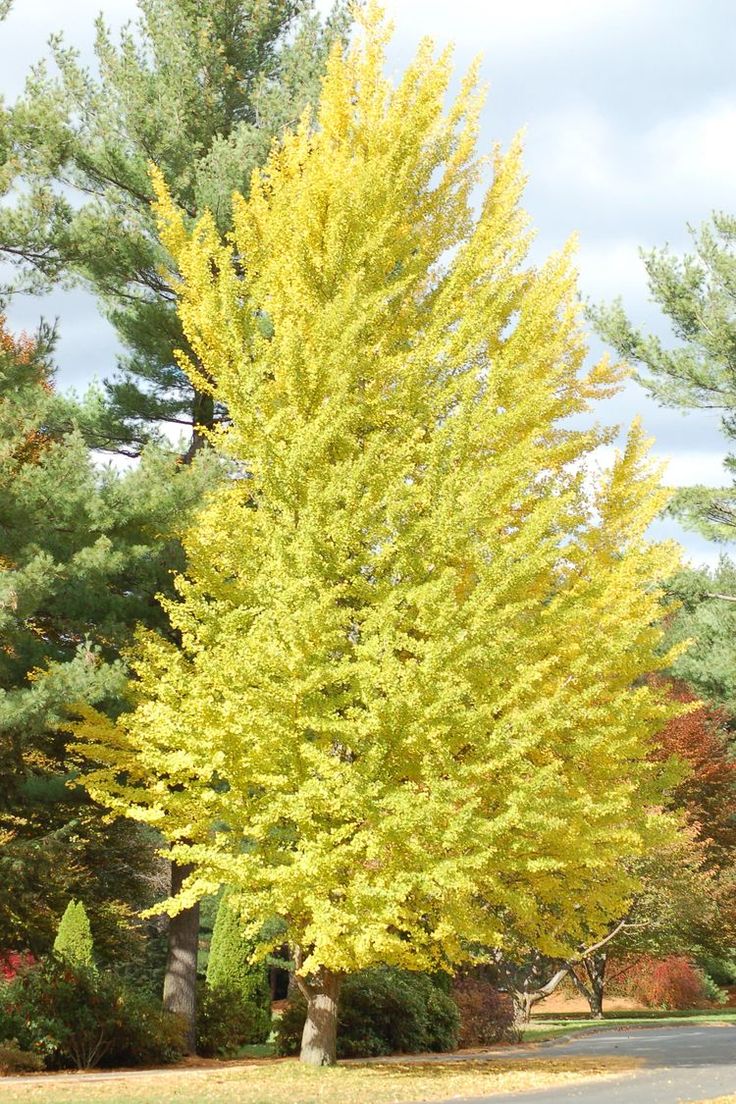
Another resilient tree is the Palo Verde tree. This tree is native to the southwestern United States and is well-suited for drought-prone areas. It has green bark and small leaves, which help it conserve water. The Palo Verde tree also has deep roots that can access water deep underground.
The Joshua tree is another rugged tree that can withstand drought. This tree is native to the Mojave Desert and has adapted to survive in extreme arid conditions. It has a unique shape with branches that spread out like a fan, which helps it collect water during rare rainfall events.
Lastly, the Olive tree is a drought-tolerant tree that is known for its resilience. It has small, silver-green leaves that help reduce water loss and can survive with minimal watering. The Olive tree is also able to tolerate high temperatures and dry climates, making it an ideal choice for drought-stricken areas.
In conclusion, when choosing trees for landscapes that are rugged and able to withstand drought, consider options such as the Mesquite tree, Palo Verde tree, Joshua tree, and Olive tree. These trees have adapted to survive in dry and arid environments and can thrive with minimal water requirements.
Durable Trees for Dry and Hot Climates
When it comes to landscaping in dry and hot climates, it’s important to choose trees that can withstand the harsh conditions. These trees need to be rugged and able to thrive with minimal water. Here are four durable trees that are perfect for such climates:
- Mesquite Tree: Known for its ability to survive in desert-like conditions, the Mesquite tree is a popular choice for dry and hot climates. It has deep roots that allow it to access water from deep within the ground, making it highly drought-tolerant.
- Olive Tree: The Olive tree is not only known for its delicious fruits, but also for its ability to withstand drought. It has small, silver-gray leaves that help it conserve water, making it an ideal choice for dry climates.
- Juniper Tree: Juniper trees are incredibly hardy and can tolerate a wide range of climates, including dry and hot ones. They have unique blue-green foliage that adds a touch of color to any landscape, while also being drought-tolerant.
- Acacia Tree: Acacia trees are native to arid regions and are well-suited for dry and hot climates. They have long, thorny branches that provide shade and protection from the sun, making them a popular choice for landscaping in desert-like environments.
These four trees are not only durable and able to withstand dry and hot climates, but they also add beauty and character to any landscape. Whether you’re looking to create a desert oasis or simply want to add some greenery to your backyard, these trees are sure to thrive and make a lasting impression.
Tough Trees that Survive Drought
When it comes to surviving in harsh, dry conditions, these 4 drought-tolerant trees are truly remarkable. These trees have adapted to thrive in arid climates, making them perfect choices for landscaping in areas with limited water resources.
1. Palo Verde: This tree is well-known for its ability to withstand drought. With its green bark and vibrant yellow flowers, the Palo Verde adds a splash of color to any landscape. It has a deep root system that allows it to access water from deep within the ground, making it extremely resilient during dry spells.
2. Joshua Tree: The Joshua Tree is an iconic symbol of the desert. It is a slow-growing tree that can live for hundreds of years. Its unique shape and spiky leaves help it conserve water, allowing it to survive in the arid conditions of the desert. This tree is a true survivor.
3. Olive Tree: The Olive Tree is not only drought-tolerant but also highly adaptable to a variety of soil types. It is known for its ability to withstand extreme heat and drought, making it a popular choice in Mediterranean climates. The Olive Tree also produces delicious fruits and has a beautiful, silvery-green foliage.
4. Mesquite Tree: The Mesquite Tree is a hardy tree that can thrive in even the harshest of conditions. It has long, deep roots that allow it to access water from deep underground. This tree is not only drought-tolerant but also provides shade and shelter for wildlife. It is a valuable asset in desert ecosystems.
These 4 tough trees are excellent choices for landscaping in drought-prone areas. Not only do they add beauty to the landscape, but they also play a crucial role in conserving water and preserving the ecosystem. By planting these trees, you can create a sustainable and resilient landscape that can withstand the challenges of drought.
Low-Maintenance Trees for Dry Regions
When it comes to landscaping in dry regions, it is important to choose trees that can thrive and survive with minimal water and maintenance. Here are four low-maintenance trees that are perfect for dry regions:
- Mesquite Tree: The mesquite tree is a rugged and drought-tolerant tree that is native to arid regions. It has deep roots that allow it to access water from deep within the soil. This tree is also known for its beautiful yellow flowers and unique twisted branches.
- Juniper Tree: Juniper trees are known for their ability to withstand harsh conditions, including drought. These trees have dense foliage that provides shade and protection from the sun. They also have a unique fragrance and can be shaped into different forms, making them a versatile choice for dry regions.
- Palo Verde Tree: The Palo Verde tree is a desert tree that can adapt well to dry regions. It has green bark and small leaves that help it conserve water. This tree also produces beautiful yellow flowers, adding a splash of color to the landscape.
- Acacia Tree: Acacia trees are known for their resilience and ability to survive in harsh conditions. They have long, thorny branches that provide shade and protection from the sun. These trees also have beautiful yellow flowers and can attract birds and other wildlife.
These low-maintenance trees are not only drought-tolerant but also add beauty and character to any landscape in dry regions. Whether you are looking for shade, color, or wildlife attraction, these trees are a great choice for any garden or backyard.
Robust Trees that Adapt to Water Scarcity
Drought-tolerant trees are essential for regions that experience water scarcity. These rugged trees have evolved to adapt and thrive in arid conditions, making them a valuable asset for landscaping and conservation efforts.
One example of a drought-tolerant tree is the Mesquite tree. Native to desert regions, this tree has deep roots that can access water sources deep underground. Its leaves are small and waxy, reducing water loss through transpiration. The Mesquite tree also provides shade and shelter for other plants and animals in its ecosystem.
Another drought-tolerant tree is the Palo Verde. This tree is known for its green bark, which helps it photosynthesize even during droughts. It has tiny leaves that minimize water loss and can store water in its trunk and branches. The Palo Verde is a hardy tree that can withstand high temperatures and prolonged periods of drought.
The Olive tree is another example of a drought-tolerant tree. It is native to the Mediterranean region and has been cultivated for thousands of years. The Olive tree has small, silver-green leaves that reduce water loss and can tolerate saline soils. It is highly adaptable and can survive in a wide range of climates, making it a popular choice for landscaping.
The Tamarisk tree is a drought-tolerant tree that is often used for erosion control. It has feathery, gray-green leaves that help reduce water loss. The Tamarisk tree can also tolerate high levels of salt in the soil and is often found in coastal areas. It is a hardy tree that can withstand harsh conditions and is a valuable asset for land restoration projects.
In conclusion, drought-tolerant trees are essential for regions with water scarcity. These rugged trees have unique adaptations that allow them to thrive in arid conditions. Whether it’s the deep roots of the Mesquite tree, the green bark of the Palo Verde, the small leaves of the Olive tree, or the feathery leaves of the Tamarisk tree, these trees are valuable assets for landscaping and conservation efforts.
Long-Living Trees for Dry Landscapes
When it comes to creating a beautiful and sustainable landscape in dry climates, choosing drought-tolerant trees is essential. These trees are able to thrive in arid conditions, making them perfect for areas with limited water resources. Here are 4 long-living trees that are well-suited for dry landscapes:
- Olive tree: The olive tree is not only known for its delicious fruit and oil, but also for its ability to withstand drought conditions. With its silver-gray leaves and twisted branches, the olive tree adds a touch of Mediterranean charm to any landscape.
- Desert willow: This native tree is a favorite in dry landscapes due to its beautiful trumpet-shaped flowers and slender leaves. Despite its delicate appearance, the desert willow is highly drought-tolerant and can survive in even the harshest of conditions.
- Mesquite tree: Native to the southwestern United States, the mesquite tree is well-adapted to dry climates. Its deep roots allow it to access water from deep within the soil, making it highly drought-tolerant. The mesquite tree also provides shade and shelter for wildlife.
- Palo verde: The palo verde tree is a true survivor in dry landscapes. Its green bark and bright yellow flowers make it a standout in any garden. This tree has the unique ability to photosynthesize through its bark, allowing it to conserve water during periods of drought.
By incorporating these drought-tolerant trees into your landscape, you can create a beautiful and sustainable environment that thrives even in the driest of conditions. Remember to provide proper care and maintenance to ensure the longevity of these long-living trees.
Sturdy Trees that Endure Dry Spells
When it comes to selecting trees for areas with low water availability, it is important to choose varieties that are rugged and drought-tolerant. These trees have adapted to survive in arid conditions and can withstand long periods of dry spells without requiring frequent watering or maintenance.
Here are four examples of sturdy trees that are well-suited for regions with limited water resources:
- Juniper: This evergreen tree is known for its resilience and ability to thrive in dry climates. With its dense foliage and low water requirements, the juniper is an excellent choice for landscapes that experience prolonged droughts.
- Mesquite: Native to desert regions, the mesquite tree is highly adapted to arid conditions. Its deep root system allows it to access water from deep within the soil, making it incredibly drought-tolerant.
- Olive: The olive tree is not only known for its culinary uses but also for its ability to withstand dry spells. Its small, silver-green leaves help reduce water loss through transpiration, making it an ideal choice for water-conscious gardens.
- Palo Verde: This tree, native to the southwestern United States, is well-known for its drought tolerance. With its green bark and delicate leaves, the palo verde is a visually striking addition to any landscape while requiring minimal watering.
These four rugged and drought-tolerant trees are excellent choices for areas with limited water availability. Their ability to endure dry spells without compromising their health and beauty makes them ideal for landscaping projects in arid regions.
Reliable Trees for Arid Climates
When it comes to finding trees that can thrive in arid climates, it’s important to look for rugged species that are well-suited to these challenging conditions. These trees have adapted to survive in environments with limited water resources, making them reliable choices for gardens and landscapes in arid regions.
One such tree is the Desert Willow (Chilopsis linearis), known for its ability to withstand drought and extreme heat. This tree features beautiful, trumpet-shaped flowers and can grow up to 25 feet tall. Its deep roots allow it to access water deep underground, making it an excellent choice for arid landscapes.
Another reliable tree for arid climates is the Palo Verde (Parkinsonia spp.), which is native to the southwestern United States and Mexico. This tree has a unique green bark and small, yellow flowers. It has adapted to arid conditions by storing water in its trunk and branches, allowing it to survive in areas with little rainfall.
The Mesquite (Prosopis spp.) is another rugged tree that thrives in arid climates. It has long, thorny branches and small, yellow flowers. The Mesquite is highly drought-tolerant and can survive in hot, dry environments with minimal water. It is also known for its ability to fix nitrogen in the soil, making it a valuable tree for improving soil fertility.
Lastly, the Olive tree (Olea europaea) is a reliable choice for arid climates. It is known for its ability to withstand drought and high temperatures. The Olive tree has small, silver-green leaves and produces edible fruits. It is a low-maintenance tree that can add beauty and shade to arid landscapes.
Overall, these four trees are excellent choices for arid climates. Their ruggedness and ability to tolerate drought make them reliable options for gardens and landscapes in regions with limited water resources.
Water-Wise Trees for Drought-Prone Areas
Living in a drought-prone area can be challenging, especially when it comes to maintaining a lush and green landscape. However, there are several drought-tolerant trees that can thrive in these rugged conditions and still provide beauty and shade to your outdoor space.
One such tree is the Palo Verde. This tree is native to the southwestern United States and is known for its ability to withstand dry conditions. With its green bark and delicate leaves, the Palo Verde adds a unique and striking aesthetic to any landscape.
Another water-wise tree is the Olive tree. Originating from the Mediterranean region, this tree is well adapted to hot and dry climates. Its silver-green leaves and twisted branches create a beautiful and rustic look that can enhance any outdoor space.
The Mesquite tree is also a great choice for drought-prone areas. This rugged tree is native to the arid regions of North and South America and is known for its ability to survive in harsh conditions. With its feathery foliage and twisted trunk, the Mesquite tree adds a touch of elegance to any landscape.
Lastly, the Acacia tree is a popular choice for drought-tolerant landscaping. This tree is native to Australia and is well adapted to dry and arid climates. With its small, bright yellow flowers and fern-like leaves, the Acacia tree adds a splash of color and texture to any outdoor space.
When selecting trees for your drought-prone area, it’s important to choose species that are well adapted to the local climate and can withstand long periods without water. These water-wise trees are not only beautiful but also help conserve water and reduce the need for irrigation, making them ideal choices for drought-prone areas.
FAQ:
What are some drought-tolerant trees that can withstand harsh conditions?
There are several rugged trees that are known for their ability to withstand drought and harsh conditions. Some examples include the Palo Verde, the Desert Willow, the Mesquite, and the Joshua Tree.
Are there any trees that can survive in dry climates?
Yes, there are several trees that are well-suited for dry climates and can survive with little water. Some examples include the Palo Verde, which is native to the desert regions of the Southwestern United States, and the Desert Willow, which is native to the deserts of North America.
What are some characteristics of drought-tolerant trees?
Drought-tolerant trees typically have adaptations that allow them to survive in dry conditions. These adaptations can include deep root systems, small leaves that reduce water loss through transpiration, and the ability to store water in their trunk or branches.
